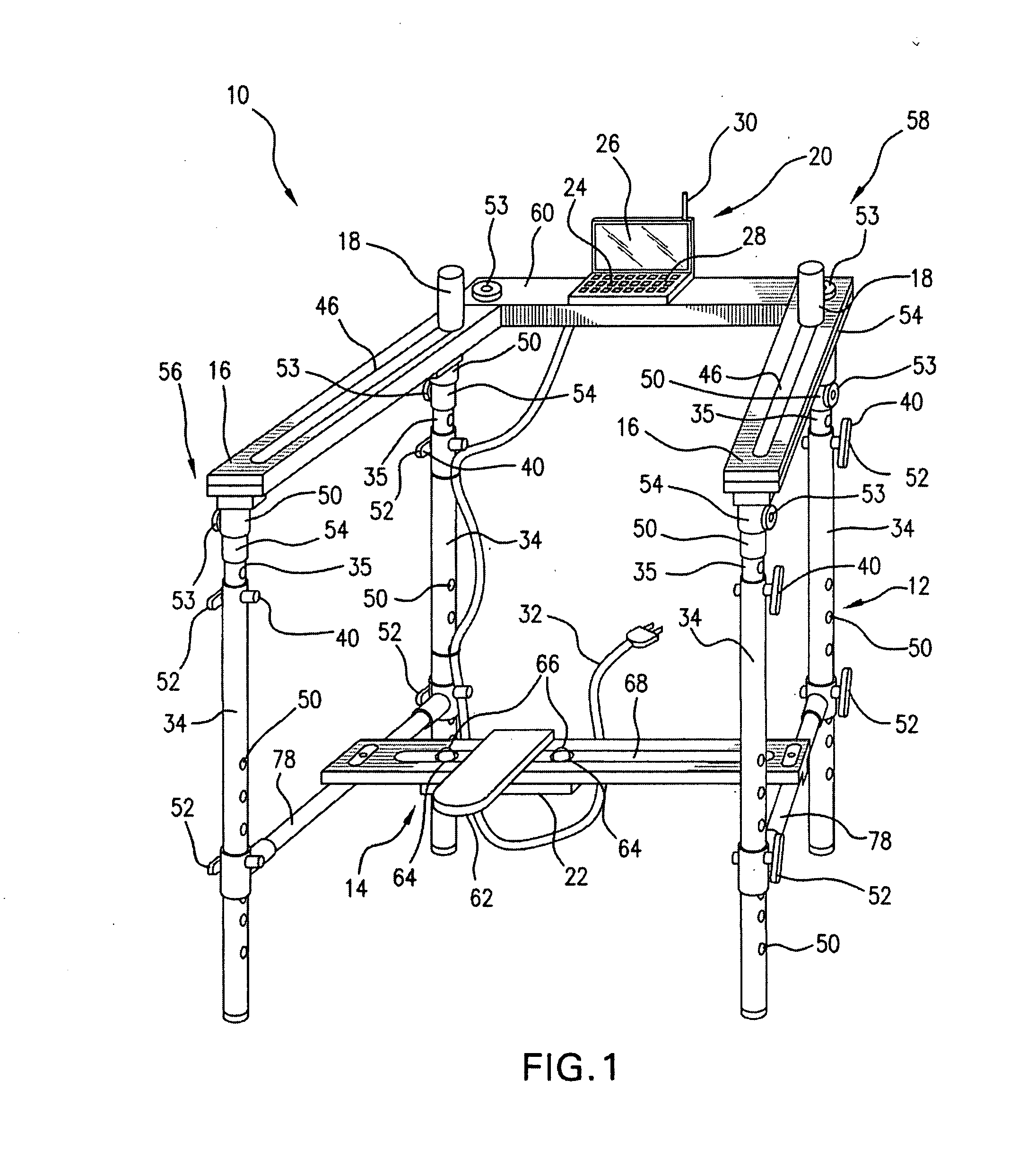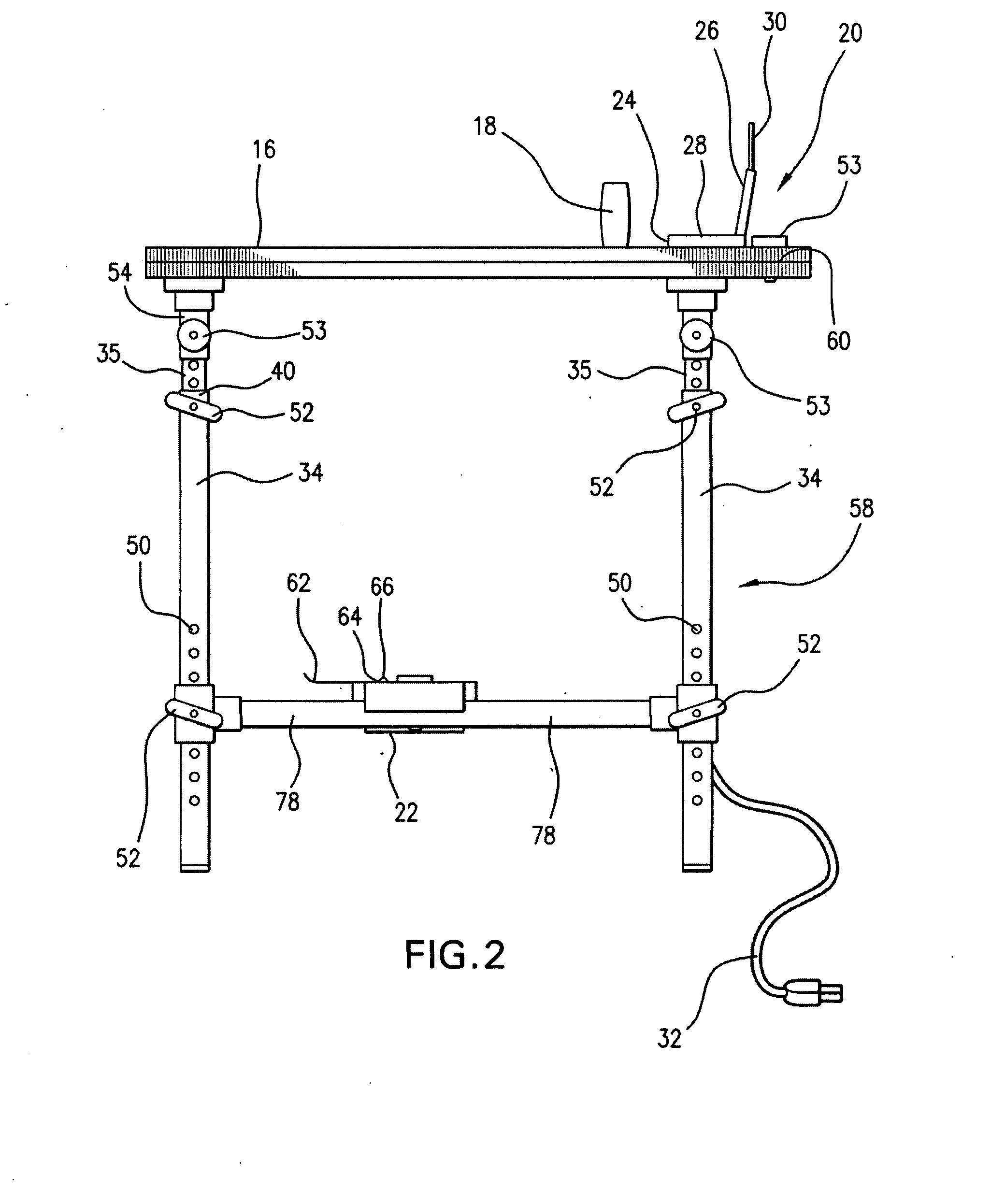Orthopedic therapy system and device and a method of use
a technology of orthopedic therapy and device, applied in the physical field, can solve the problems of limited function, inability to select the optimum setting, and inability to use the device, and achieve the effect of reducing pain, and reducing the number of patients
- Summary
- Abstract
- Description
- Claims
- Application Information
AI Technical Summary
Benefits of technology
Problems solved by technology
Method used
Image
Examples
Embodiment Construction
[0039]Detailed embodiments of the present invention are disclosed herein and represented in FIGS. 1-11; however, it is understood that the following description and each of the accompanying figures are provided as being exemplary of the invention, which may be embodied in various forms without departing from the scope of the claimed invention. Thus, the specific structural and functional details provided in the following description are non-limiting, but serve merely as a basis for the invention as defined by the claims provided herewith. The system described below can be modified as needed to conform to further development and improvement of materials without departing from the inventor's concept of the invention as claimed.
[0040]The concept of the invention is to provide a system that can be used by a patient for exercise therapy for any part of the body requiring post-operative or post-injury physical rehabilitation. The following non-limiting description is directed to the inven...
PUM
 Login to View More
Login to View More Abstract
Description
Claims
Application Information
 Login to View More
Login to View More - R&D
- Intellectual Property
- Life Sciences
- Materials
- Tech Scout
- Unparalleled Data Quality
- Higher Quality Content
- 60% Fewer Hallucinations
Browse by: Latest US Patents, China's latest patents, Technical Efficacy Thesaurus, Application Domain, Technology Topic, Popular Technical Reports.
© 2025 PatSnap. All rights reserved.Legal|Privacy policy|Modern Slavery Act Transparency Statement|Sitemap|About US| Contact US: help@patsnap.com



